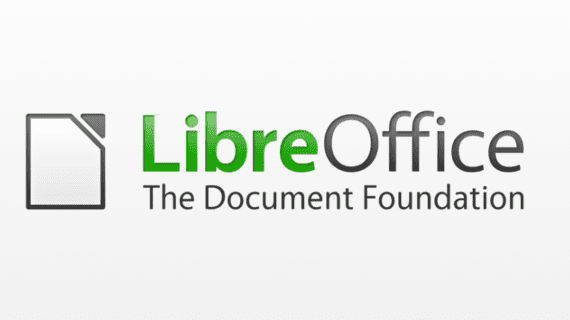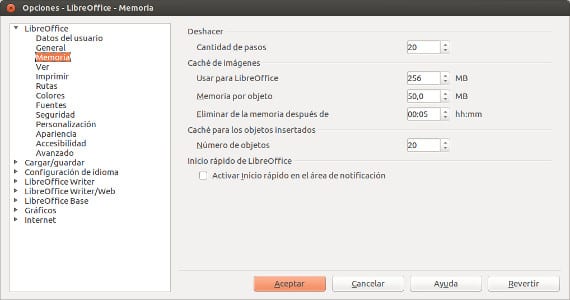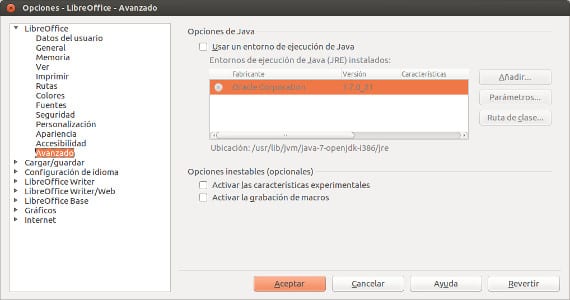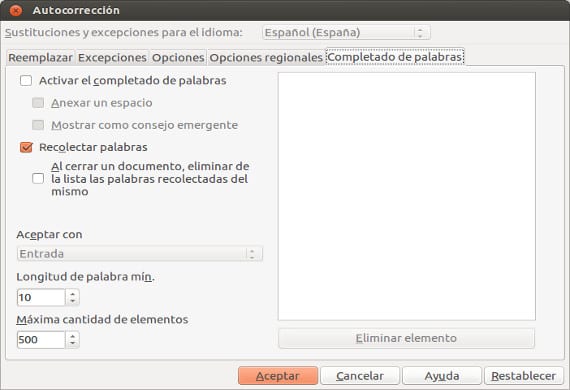
From Ubunlog we have given considerable interest to customizing our computing environment and operating system. We do it for two things: the first because it is a virtue of the Open Source and we not only want but we are obliged to demonstrate and spread; the second because this customization sometimes improves the speed and effectiveness of the programs as well as, as a general rule, it allows us to better understand the operation of our system. LibreOffice It is one of the most used programs, being one of the main office automation packages worldwide. It also offers very useful customization in terms of performance and efficiency. So let's do a series of tips and tricks That allow us speed up our LibreOffice without any problem. To do this we go to the Tools Menu → Options.
Memory Modification in LibreOffice
The section of Memory in LibreOffice It is one of the screens required to see if what we want is to speed up the operation of our office suite.

This image shows how we should leave the parameters for optimal performance, although you can always vary the parameters and play with them to find out which ones best suit our system and computer.
- Reduce Number of Steps in the parameter Undo until we adjust it to our liking. In the example I have used 20 but depending on the use you give it, you can lower or raise it. That will free up memory and / or work time.
- At Lóleo Eventos, Image Cache, set the cache usage with a maximum of 256MB. Normally used for the management of Images. Like everything, it depends on the use you give it, if you only use the word processor and do not insert images you can download it to half, 128 mb, but that depends on your option. Keep in mind that it is a system for all applications of LibreOffice not just for the word processor.
- En Memory by Object adjust it up to 50mb maximum. This is in charge of managing elements that are not images, such as inserting audio, graphics, operations, etc ... That is why it is not good to download it too much since LibreOffice would crash.
- Fix removal of the memory image cache after 00:05 minutes. More than 5 minutes I do not think it is necessary to cache images. However, you may work with images and text and it is necessary for you. Anyway, I do not know this option in other office suites such as Microsoft Office. It is a good utility.
- The cache for inserted objects is reduced to 20. Thus we reduce the number of objects that the system can handle and thus reduce the consumption of cpu and ram memory. 20 is a generally good figure here, I would not dare to lower it just in case in some document we need a higher number than we establish.
Also LibreOffice allows loading at system startup. This option allows us to load the book office As we turn on the computer, it is focused on a very office use of our system, causing it to load at the beginning and when we start it load fewer components, if we do not do this, I do not recommend it as it slows down our system quite a bit.
Another option that we must rule out is in the area of Advanced, disconnect Java technology. I personally have tried it and it shows a lot, even on new and powerful equipment. Furthermore, its deactivation is not harmful. Personally, I have been using office packages since 1998 and the use of Java technologies I have never practiced it so I think that for the average user, this option is more beneficial than harmful.

In auto-correction options we have the option of disable autocompleteIf we are not very given to using this option, it is also a good recommendation to deactivate it. There are also other options such as removing the customization options, in the latest versions it is allowed to LibreOffice use personalization Mozilla Firefox People, which slows down our program.

These modifications are very beneficial, as I said, if we use it daily, almost at home, if not it is better that you use the testing system and go one by one modifying and testing things. There are more customizations and modifications on the net, but I think those changes would already make LibreOffice a suite different from what it is and it would be more profitable for us to switch to other programs such as Abiword o Gnumeric, that's why I have not included them. I hope they are useful to you and you will tell me how they are going. Greetings.
More information - Optimize Ubuntu (more so), How to free up Ram memory in Ubuntu,
Source - Jack Moreno's blog
Image - LibreOffice project
thanks a query:
when I copy images from the internet to libreoffice I save and everything. but when I open it without internet connection, the drawings do not appear. What I can do
I do not know for sure, it would have to see your computer, but the most likely thing is that the image does not copy it or has an address relative to the web address. Try reopening the online document to see if you see it
Hello! What happens (I think) is that it copies the images as links. It does not insert the images, but links them (makes a reference to the originals on the Internet). To correct this, all you have to do is go to the "Edit" menu, select the "Links ..." option, choose the images you want to unlink and click on "Unlink". By doing that, the images will be embedded in the document (yes, I suppose you will need to be connected to the Internet to perform this operation).
Thanks Rober, I also believe that this is the problem and the solution. When you copy elements that are not text, it is very likely that what you copy is a kind of direct access to the address from which you copied, if you do not have internet you do not see it but if you are connected it will seem that everything is fine. Unlinking, what you do is remove the address and actually copy.